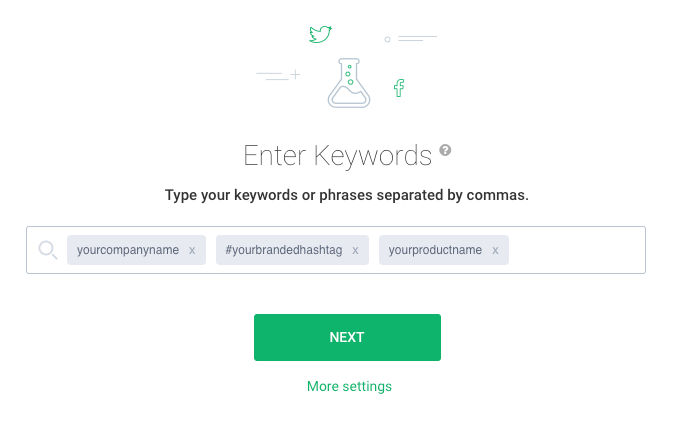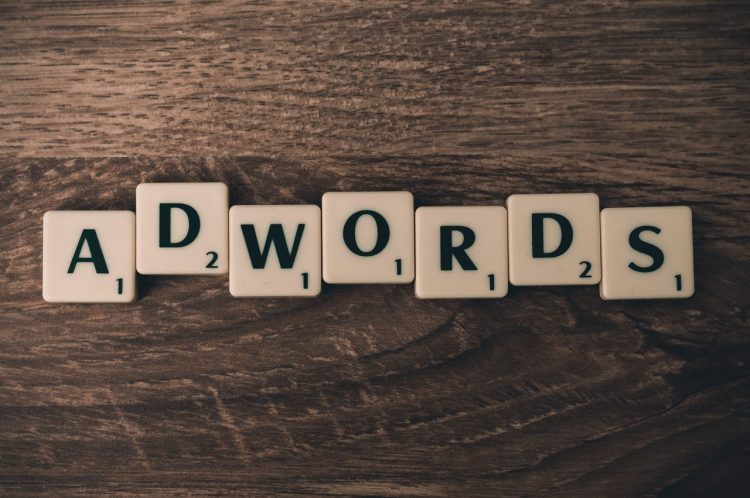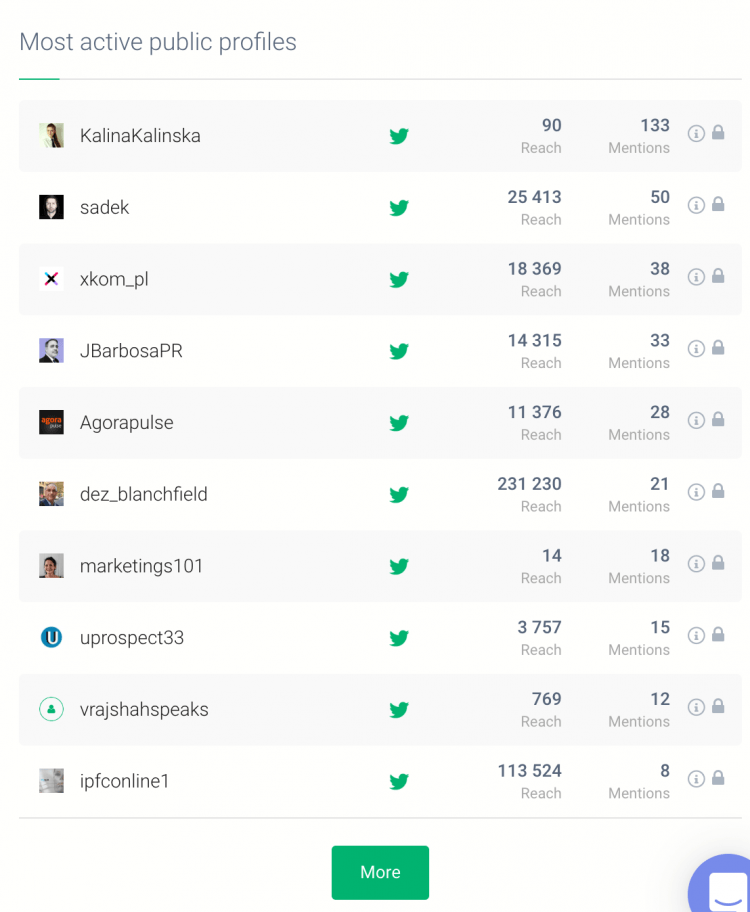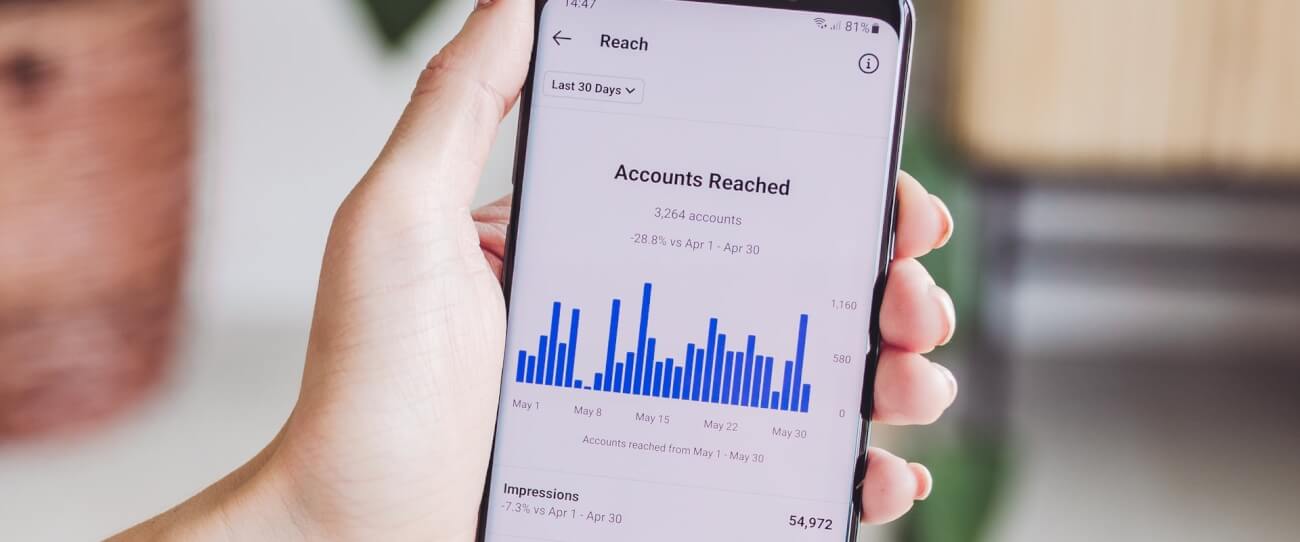Top Social Media Measurement Mistakes and How to Avoid Them
Table of contents
We all know that we have to measure the results of our marketing activities. There are plenty of tools to measure social media campaigns, email marketing campaigns, not to mention paid ads activities. But marketing managers often fall into a trap of measuring metrics that look great in an Excel table but don’t reflect the overall state of your marketing activities.
That’s a mistake we all often make. We focus on social media measurement metrics that are either easy to follow or don’t tell us much about the conditions your company is operating.
Think about it – you may want to focus on the followers’ count of your social media accounts. The social media metric is easy to follow, you don’t need any external tools to measure it, and you can clearly see growth if you consistently build your channel.
Does it sound too good to be true? Well, because it is. The number of followers is a nice metric, but if you want to assess the state of your social media activities you have to take a deeper look at the engagement rates. And social media engagement rates are much harder to calculate.
Identifying the right metrics to track is one of the greatest challenges faced by many marketers. Hopefully, with a little help from this article, you’ll be able to focus on the right social measurement metrics and boost your sales, brand awareness, and much more!
Let’s take a look at the top social media measurement mistakes, and see how to avoid them!
Here’s our itinerary for today:
Why is social measurement important?
First things first, let’s make sure what are the benefits of social measurement.
To make a long story short, social media measurement will let you know whether your marketing strategy is on the right track. If you don’t meet your goals you’ll know that you have to adjust your marketing strategy – try out different social media channel, alter your content, or conduct a more thorough SEO research.
Without social measurement, marketing managers are like babies in the woods.

Since we all know that social measurement is an indispensable part of a marketing campaign, let’s take a look at what not to measure. After all, examining vanity metrics is as dangerous as not measuring the results of your activities at all.
So, without further ado, let’s take a look at top social media measurement mistakes!
Top social media measurement mistakes
After a discussion at our marketing department, I put together a list of social media measurement mistakes we’d all wished we could have avoided. Take a look and learn from our measurement mistakes!
1. Not setting specific goals
We all like growing numbers, but to stay on top of things we need to check on a regular basis whether your metrics are growing at the right pace. To do that we need to set up SMART goals. The acronym stands for specific, measurable, achievable, relevant, and time-bound goals.
An example of a SMART goal would be: “A 25% increase in Instagram organic reach within the first quarter.” That’s a very specific goal, possible to achieve within given timeframe, certainly relevant to your company and feasible to measure goal.
Speaking of time-bound goals, it’s a good idea to measure the results of your campaign at regular intervals. That way you can spot a decline in growth at the right time and react swiftly.
One way of measuring the performance of your social media campaign is to measure the social media reach of your dedicated hashtag. That way you’ll know how many people might have seen your content, you’ll be able to analyse the sentiment around those mentions.
There are plenty of tools for monitoring hashtag performance, and I’d like to recommend a social media monitoring tool called Brand24.
Taking a deeper look at the results of your campaign start with setting up a project.
In the project creation wizard enter the keywords you’d like to analyse. In this case, it will be a branded hashtag you use for a specific campaign or a hashtag you add to all your social media posts.

It’s important to set up a project before the start of your campaign, as social media monitoring tools, in general, don’t analyse historical data.
Once the tool starts to collect the data you’ll see the social media reach of content with your hashtag in the Mentions tab. The diagram looks like this:

Social media reach will tell you how many people have possibly seen your content. Social media engagement is broken into three separate metrics: number of likes, number of shares, and the number of comments.
Tracking hashtag performance will help you:
- identify the most engaging content and replicate it;
- measure the performance of your social media campaigns;
- see how your hashtag spreads across different social media channels.
2. Implementing marketing tactics without prior testing
That’s an especially vital point if you’re using paid ads.

Take a closer look at content that already has good organic traffic, be it the number of visits on your blog post or the total number of likes, shares, and comments under your social media post.
The analysis of organic traffic will tell you which channels are the best ones to promote your brand, at which events you should be present, and which influencers should you engage to promote your brand.
Talking of influencer marketing, let’s jump to another point.
3. Investing in influencer marketing campaign with wrong influencers
Not all buzz is good. If your influencer marketing campaign is going to work you need to choose the right influencer to begin with.
There are still many managers who think that the number of followers is an indicator of the right influencer. The bigger the number of followers, the more people could be reached multiplying the effects of the campaign.
The reality is quite different. The key to a successful influencer marketing campaign is conducting thorough research.
The best influencer to work with (and by the best I mean one that will be able to meet the goals you set up prior to commencing a campaign) is probably already in your network.
Take a look at Brand24 again, but this time you need to alter two things.
First of all, create a more general project with terms related to your business niche. For example, if I were a lipstick producer, I would monitor phrases such as “beauty”, “lipstick”, and “gloss”.
Secondly, all the necessary metrics to run a successful influencer marketing campaign are in the Analysis tab. There are two tables listing influence of social media authors and most active social media authors.

Brand24 also calculates the share of voice (the amount of online discussion generated by the author) and their influence.
The second table also states the social media reach and the total number of mentions generated by the given author.

You can narrow down the results according to the platform you’d like to analyse in further detail.
Analysing social media measurements allows you to choose an influencer that will boost your brand awareness among their followers.
4. Comparing apples to oranges
I’ve seen this social measurement mistake many times. People compare two or more metrics that look the same but are completely different. Social media algorithms work differently on every social media channel, and you can’t compare the number of likes your post receives on Facebook to the number of likes on Instagram.
If your social media strategy should work, try to measure engagement rates instead. At the end of the day, it’s more important to talk to people and be social than to passively show them your content.
5. Not investing in competitive intel
There are social media measurements you can easily spot when it comes to your competitors, for example, the posting times of their content, number of likes, and comments. The reality is, however, that it doesn’t tell you much.
You don’t know how much your competitors are spending on social media, so the numbers won’t tell you much. It’s easy to have tons of social media interactions when you spend enough money on advertising; you still don’t know anything about their organic social media reach.
Instead of the easy metrics, think about how you compare to others when it comes to managing customers’ lives in specific parts of the funnel. That analysis is much more time-consuming, but it will give you a lot of useful insights.
Maybe you need to improve your onboarding process? Or your post-purchase customer care needs some alternations? Such general analysis will help you enhance your overall marketing strategy.
6. Not setting up alert points
In a time of crisis, you need to be prepared. You can do that by setting up alert points.
Dropping below a certain threshold should trigger a response from your marketing team. If you spot the crisis early on, you prevent it from escalating and you’re able to contain the damages.
There are two important points when it comes to setting up alerts.
Firstly, choose the right social media measurement metrics. It can be a sudden decrease in engagement rates, drop in organic traffic, or in position in Google.
Secondly, choose the right timeframe. There are seasonal drops in engagements, due to holidays season, sports events, etc. The key is to spot the seasonal changes and be able to distinguish them from real drops in social media measurement metrics.
7. Focusing solely on hard numbers
We all love quantitative data; hard numbers we can easily compare and see our growth.
But qualitative analysis is no less important. It will give the necessary context you need to analyse your social media measurement numbers correctly.
Think about the volume of social media mentions. If you take a look solely at the number, you’ll come to the conclusion that the higher the number the better. The truth is a bit more complicated.
Social media listening tool will also analyse the sentiment around the mentions. That way you’ll know whether the buzz around your brand is positive or negative.
More general projects in social media listening will give you insights into two groups that are the most important to every business:
- your customers;
- your potential customers.
It will help you create interesting content, improve your product or service. It’s a win-win situation – you keep your current customers engaged, and, at the same time, you attract new ones to your brand.
Bradn24 will also help you spot trending topics around your industry and compare your company to your competition.
Social media listening is the tool that will give you extra information you need to stack up against your competitors.
How can you benefit from social media measurement?
There are, of course, many more social media measurement mistakes you could possibly make. But, in my opinion, these are the most severe ones.
Once you know about measurement mistakes, it will be easier to avoid making them. By using the right social media measurements, you will get the exact data you need to improve your business.
There’s no magic in a successful business strategy. It’s always the same two things – data and research. Hopefully, now you will be able to implement them correctly.
HANDPICKED RELATED CONTENT
How to Measure Your Social Media Campaign
How to Measure Social Media Reach
10 affordable news monitoring tools to keep you in the know



